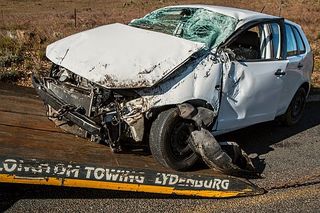
A tragic automobile accident last month resulted in the deaths of a man and woman in my community. The incident received much statewide and some national news attention as the man was a popular radio announcer for our university athletic department. The car that collided with them was driven by a 16-year-old who survived with injuries.
Among the questions about the cause of the accident were whether alcohol, drugs, or texting were responsible. A few days after the incident, it was reported that the investigation determined that the driver was not substance-impaired and had not been using a cellphone. A few days later, it was reported that the driver claimed not to remember anything about what had happened because he had fallen asleep. The investigation continues, and it remains to be seen if charges will be brought. When I speak to audiences about sleep deprivation, I remind them that all of us are at risk more from sleepy drivers and drivers using phones than from impaired drivers.
One of the arguments put forth by the advocates of later school start times for high schools is that vehicle accident rates involving sleepy teens might be reduced. Hutchens et al. (2008) reported that teens who reported driving drowsy had one-third higher odds of having been in a vehicle crash. The start time hypothesis has been supported in numerous studies. Danner et al. (2008) reported a 16.5 percent decline in accidents involving teenagers after school start times were moved later. Similarly, when Vorona et al. (2011; 2014) compared teen crash rates in two Virginia school districts with different start times, rates were significantly higher for teens (but not adults) in the district with earlier start times.
Of course, while moving high school start times later is probably a good idea for many reasons, including reducing accident rates, much more could be done to reduce accident rates in adolescents and adults. Use of cell phones, particularly for texting, has increasingly become a cause of accidents, many of which are fatal. Laws to discourage the use of phones are ineffective, largely due to the vast numbers of drivers who use phones and the minimal ability for enforcement. My view is that just as technological advances brought these devices to the public, technological remedies are needed for the problems they have created. Hands-free cell phone systems are becoming more available, for example. In the car I drive, certain functions or the entertainment system will not work while the vehicle is moving. Remedies for sleepy driving are being developed as well. Some systems already have alerts for lane drifting, and research is being conducted on devices to detecting sleepiness with cameras aimed at drivers’ eyes.
References
Danner, F., & Phillips, B. (2008). Adolescent sleep, school start times, and teen motor vehicle crashes. Journal of Clinical Sleep Medicine, 4(06), 533-535.
Hutchens, L., Senserrick, T. M., Jamieson, P. E., Romer, D., & Winston, F. K. (2008). Teen driver crash risk and associations with smoking and drowsy driving. Accident Analysis & Prevention, 40(3), 869-876.
Vorona, R. D., Szklo-Coxe, M., Wu, A., Dubik, M., Zhao, Y., & Ware, J. C. (2011). Dissimilar teen crash rates in two neighboring southeastern Virginia cities with different high school start times. Journal of Clinical Sleep Medicine, 7(02), 145-151.
Vorona, R. D., Szklo-Coxe, M., Lamichhane, R., Ware, J. C., McNallen, A., & Leszczyszyn, D. (2014). Adolescent crash rates and school start times in two central Virginia counties, 2009-2011: a follow-up study to a southeastern Virginia study, 2007-2008. Journal of clinical sleep medicine, 10(11), 1169-1177.


